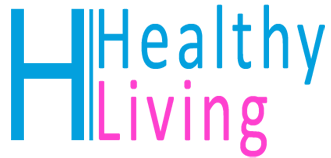Things to Know About Normal Blood Sugar Count
Generally speaking, when one talks about normal blood sugar count, the normal numbers met on that blood analysis results should have the following readings: 70 to 100 mg/dl 2 hour4s before meals, > 140 mg/dl two hours after meals. Anything equal to and above the result of 126 mg/dl generally means a diagnosis of diabetes. Notice the numbers have the ‘before’ and ‘after’ meals, this is the pre- and post- prandial, before or after anything was eaten. If the glucose request asks for pre-prandial, that means no intake of anything, including water.
Check out these related articles, too:
Juice and The Effect It Has On Your Blood Sugar
SUPERFOODS FOR BLOOD SUGAR CONTROL
Almonds The Ultimate Diabetes Superfood
How to Lower High Blood Sugar With Diabetes Herbal Remedies
How To Know If You Have The Symptoms Of Low Blood Sugar
What level of blood sugar is dangerous?
What Does High Blood Sugar Feel Like?
The Effects of Insulin on the Body
The blood sugar chart should have the normal levels of sugar in the blood to base all the results of the daily and timed monitoring. The chart, which includes all food and liquid taken plus their quantities, will also have to be recorded as the different foods can be a basis of what foods the body is reacting to, be it adversely or for its benefit. When the doctor finally sees the results after one week monitoring, adjustments in maintenance medications as well as the insulin injection can be made.
Once diagnosed as a diabetic, no matter the type, it is best to have a kit to monitor blood at home to make the monitoring easier. All it takes is an almost painful sting on the tip of a finger plus several drops of your blood on the strip which accompanies the monitor. Once the reading is done, the results should be immediate recorded. Compliance of patients may be compromised in this step as most clients hate the thought of pricking their fingers several times a day.
Maintaining a normal blood sugar count is the target of the monitoring. The only way to achieve this is a change in lifestyle and getting into the scheme of a diabetic diet. There are several foods which have to be avoided like those which contain too much fat and sugars as well as oils. There are also foods which have to be eaten to lower that sugar level. Discuss the diet with a nutritionist or a dietician and get to know the options.
Once the normal blood sugar count is compromised, there may be a danger of either hypoglycaemia (low blood sugar) or hyperglycaemia (high blood sugar). When there is no control on the hyperglycaemia, other organs of your body can break down and lead to complications which would not only be painful but could be fatal.
As a diabetic, the only way to normalize the general numbers is through diet and exercise. Monitoring the levels to achieve that normal blood sugar count may be uncomfortable, but the pros outweigh the cons in this particular case.
Lloyd Strasellhoff blogs about how to control your diabetes.. Read more about low calorie snacks [http://BloodSugarChart.us/low-calorie-snacks] and how to lower blood sugar [http://BloodSugarChart.us/how-to-lower-blood-sugar].
Article Source: http://EzineArticles.com/4565447




